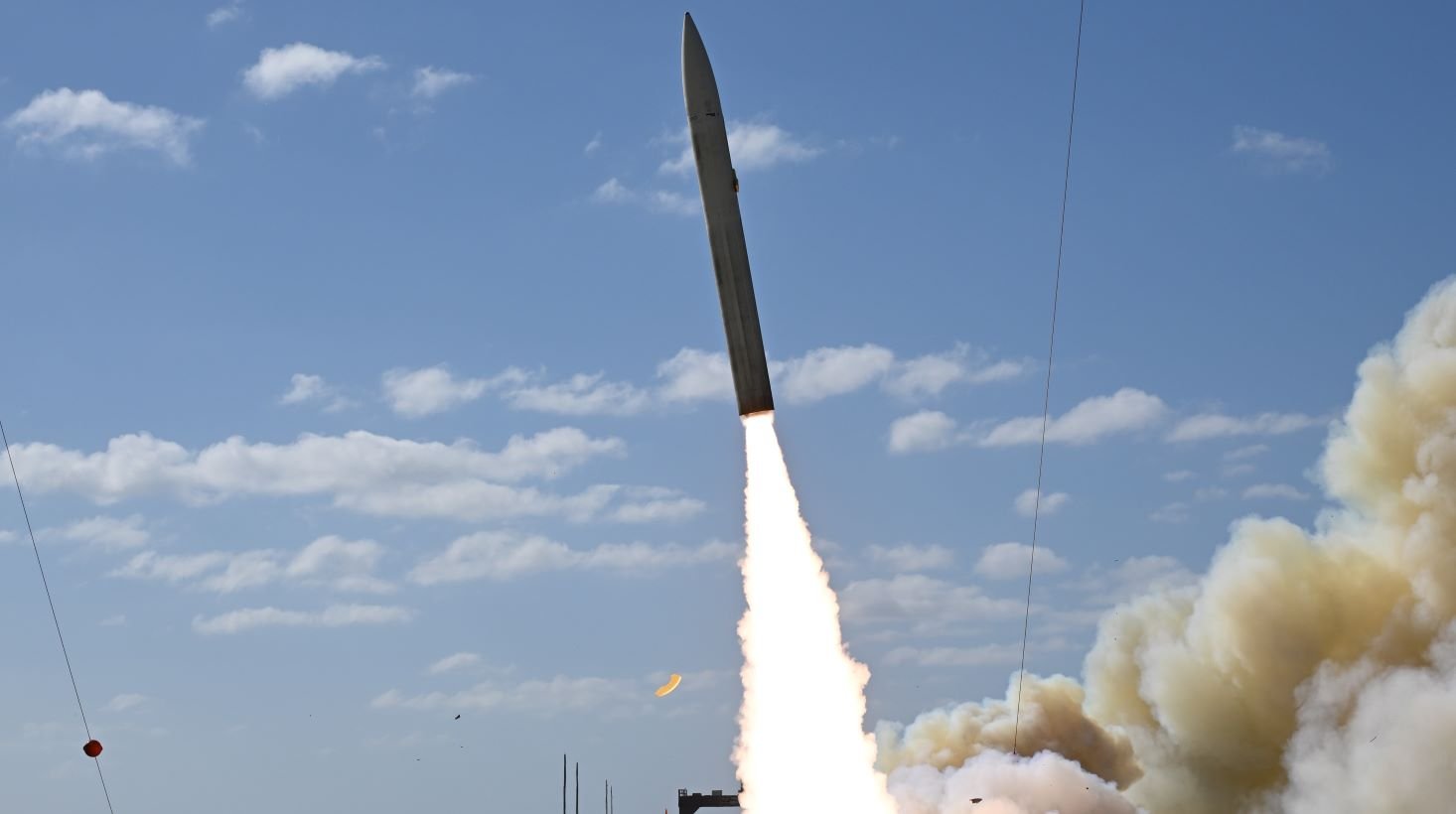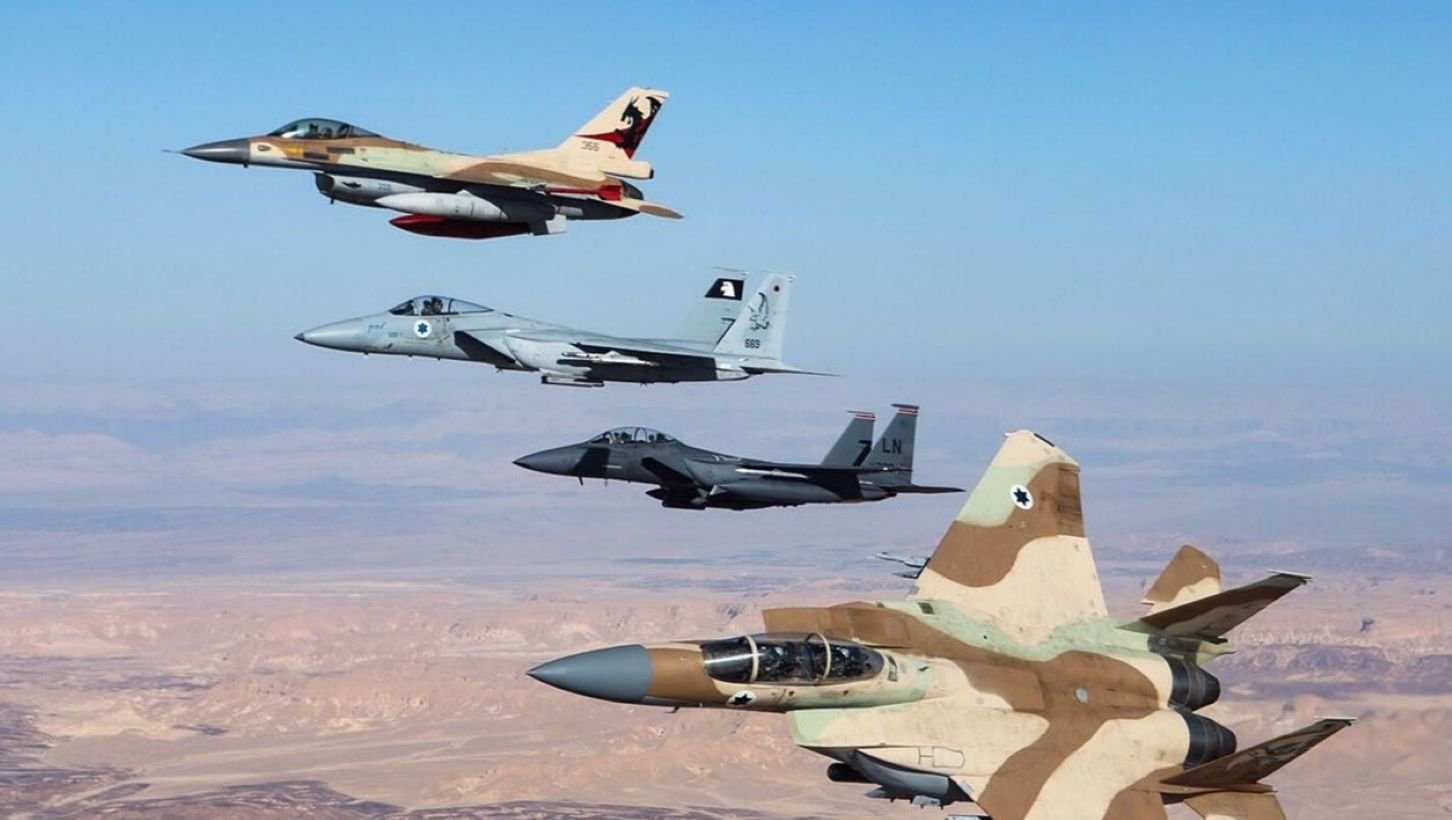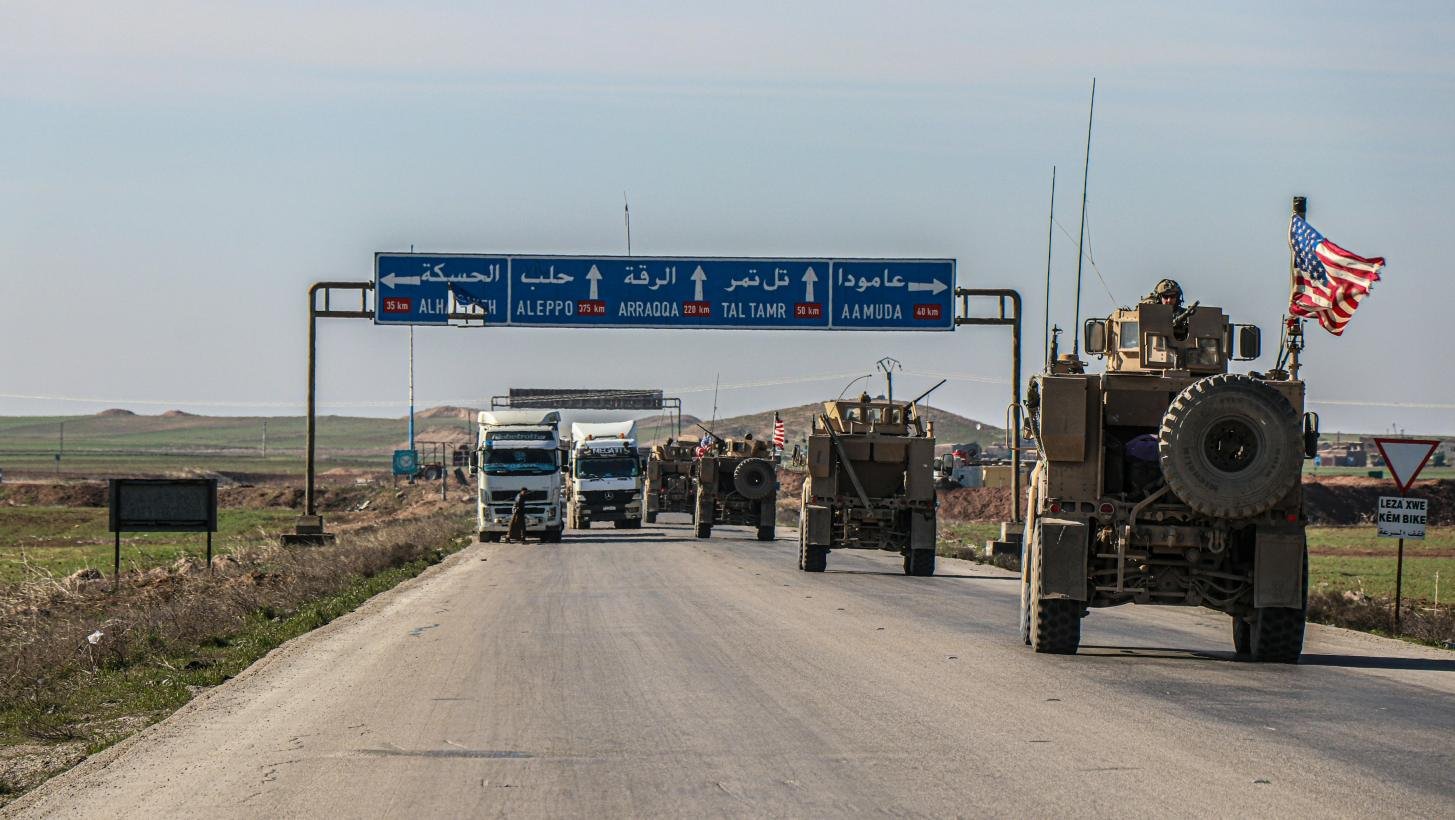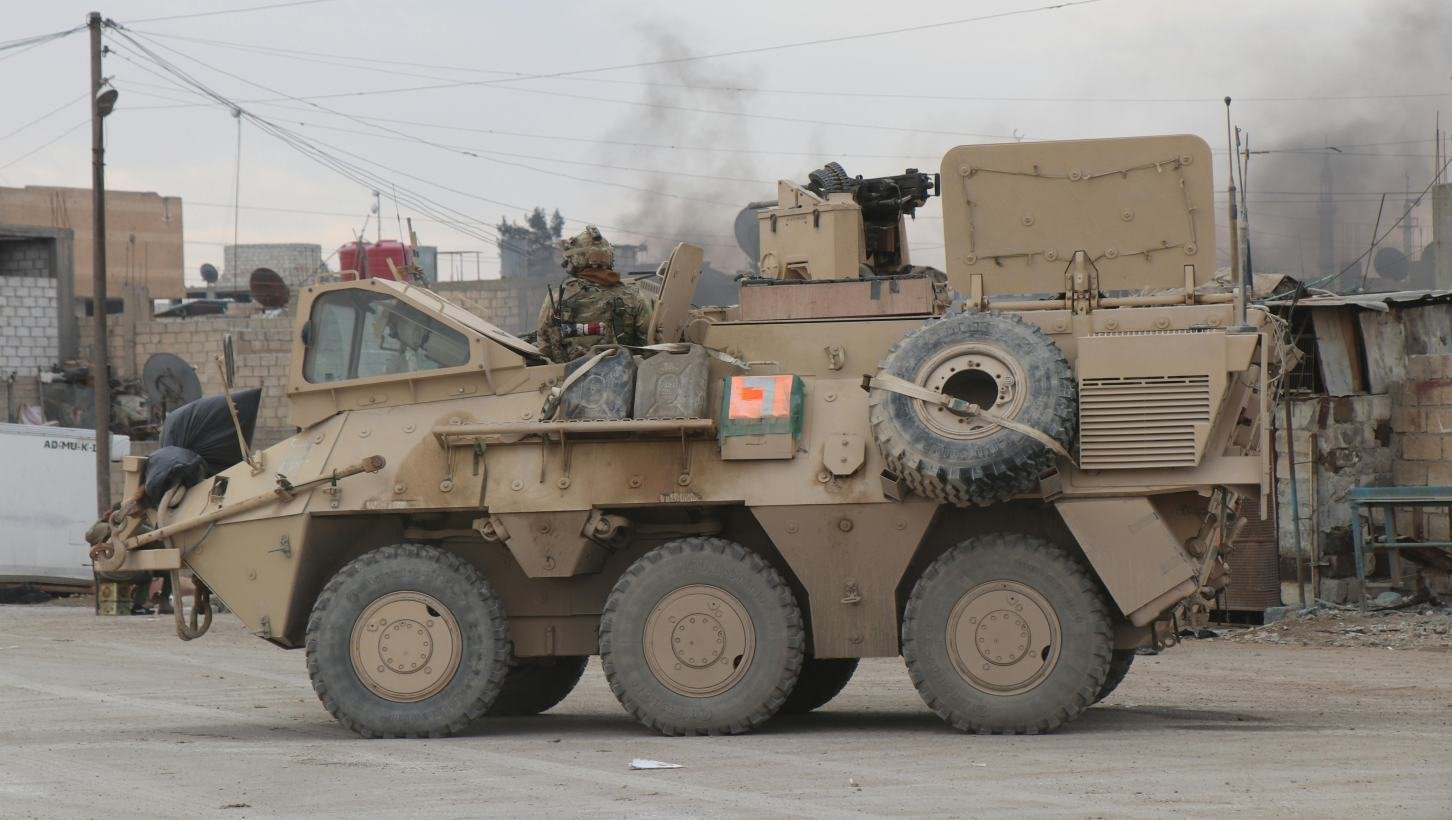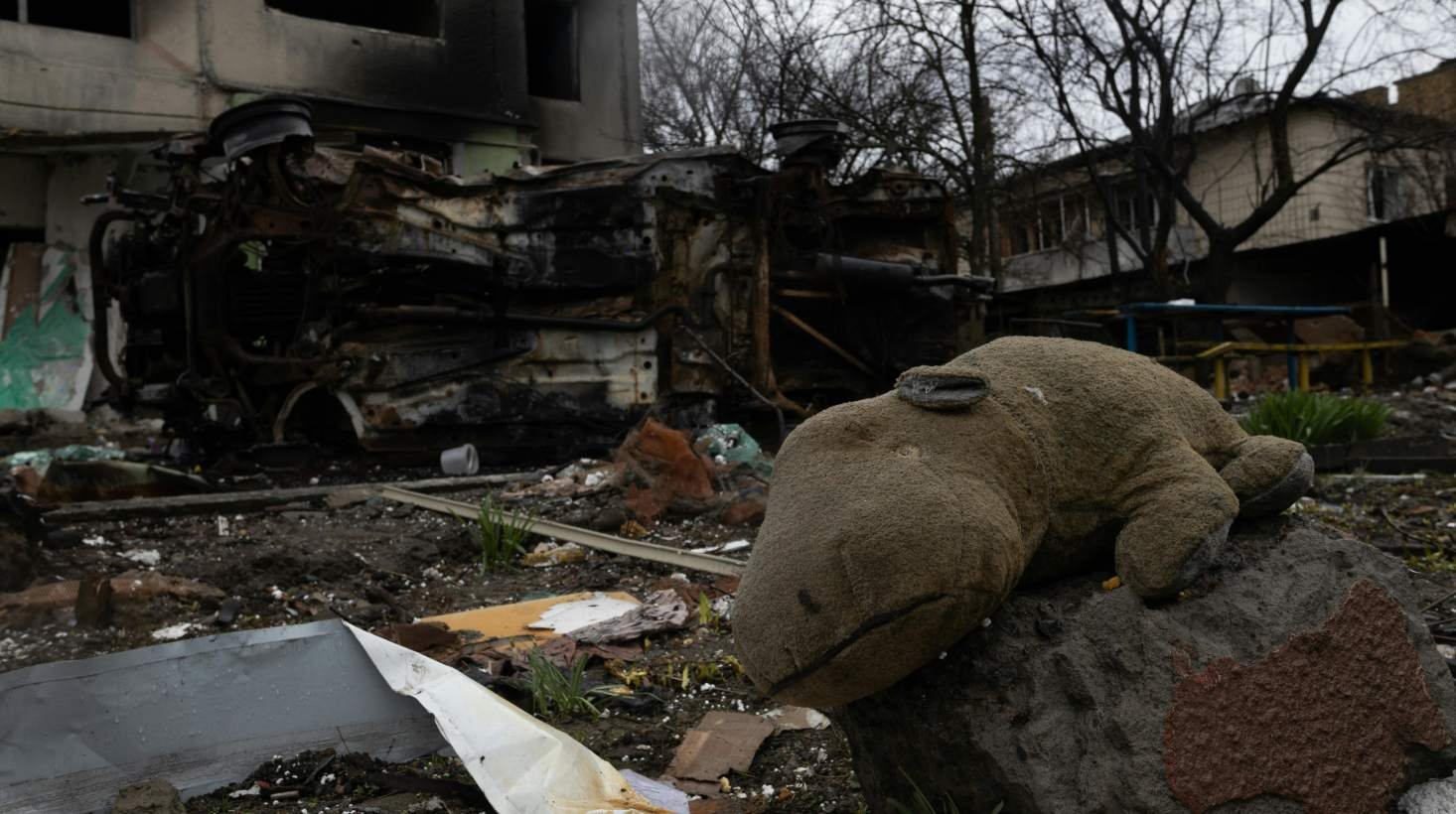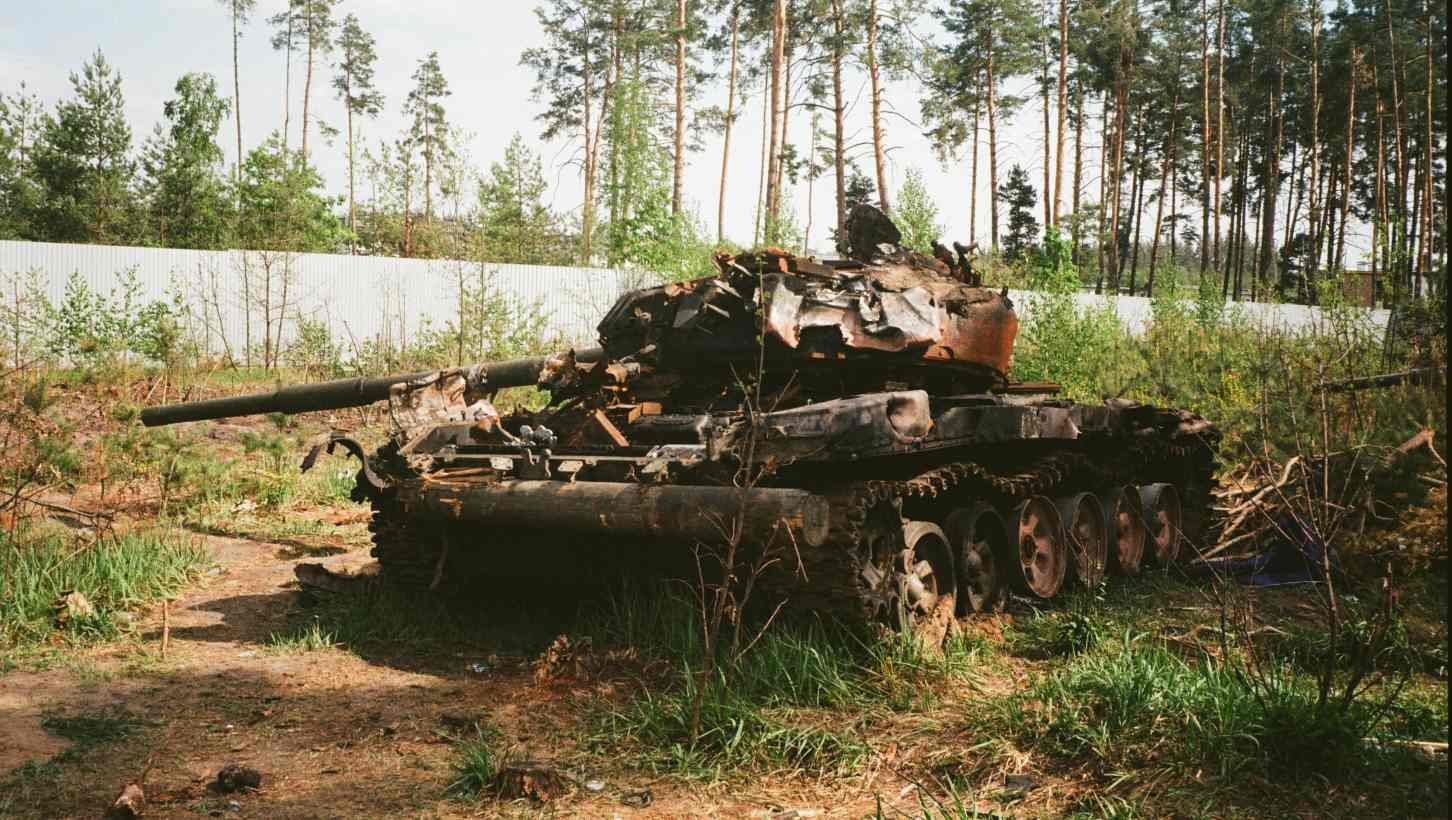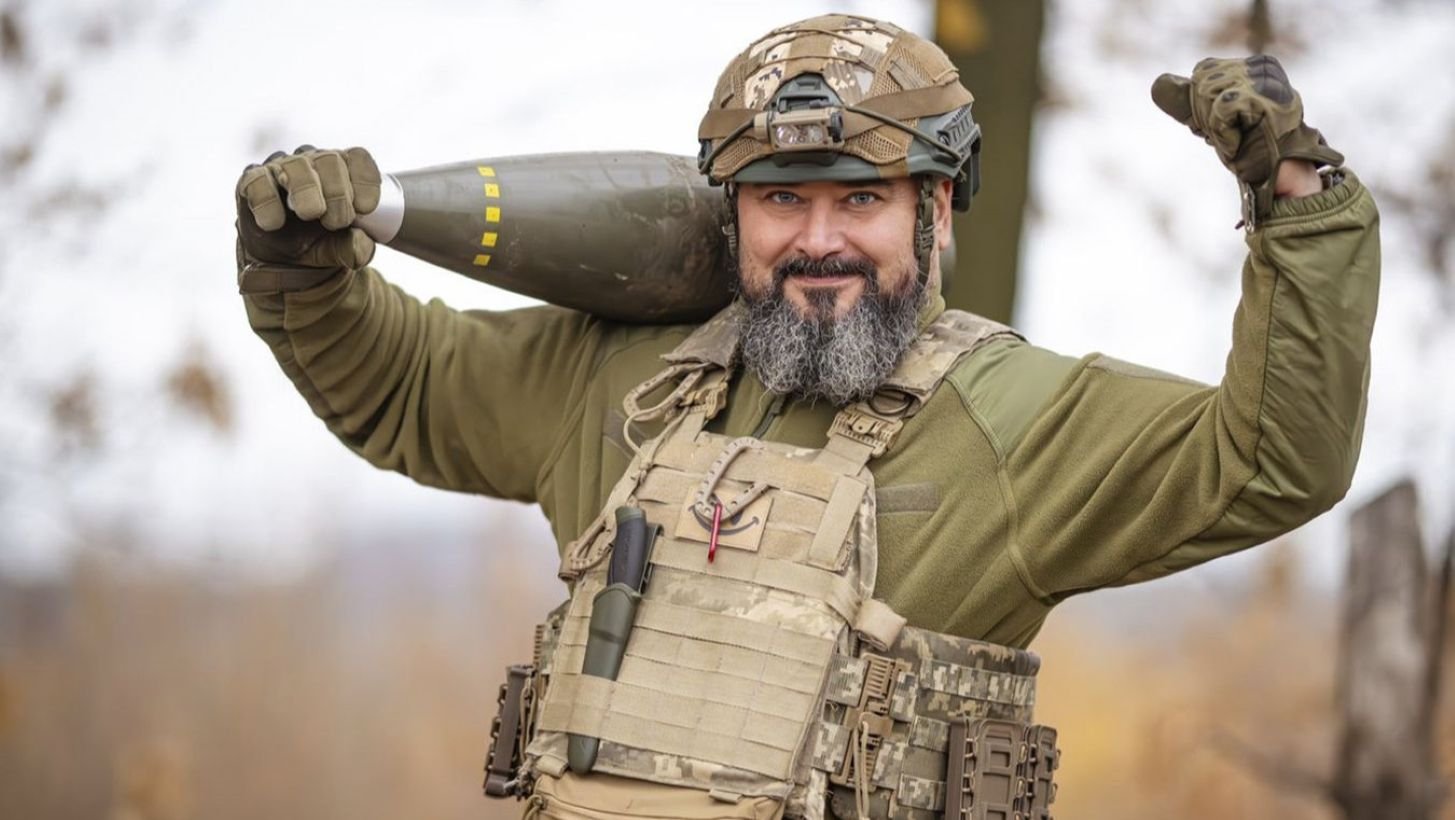-
Posts
790 -
Joined
-
Last visited
Content Type
Profiles
Uncrowned Armory News
Prepping Cookbook
Conspiracy Theories
Uncrowned Tactical Sports News
Prepping
Forums
Events
Everything posted by Uncrowned Guard
-
Ruger and Magpul Unveil Collaborative Creation: The RXM Glock-alike Ruger and Magpul, renowned for their cost-effective, top-tier offerings, have recently announced a new collaborative work dubbed the RXM - an achievement expected to be ready for consumers in 2025. The 9 mm Luger semi-automatic handgun reflects the companies' transition from bolt-on collaborations to an integral, mutually designed firearm. Advanced Features Packed Into Compact Design Measuring an overall length of 7.15” with a 4” barrel, the striker-fired RXM combines potency with portability. The RXM's fire control elements are installed in a removable, stainless-steel structure termed the Fire Control Insert (FCI). This serialized component is considered the true firearm, allowing customization of the hardware with different size frames and slide. This smart modular design is set to spark a robust aftermarket. Housed within a Magpul Enhanced Handgun Grip (EHG) RG9 grip module, the FCI is elegantly clothed in the familiar Magpul aesthetics. The Trapezoidal Surface Projection (TSP) technology stamps a unique texture across the grip's front strap, backstrap and side panels, augmenting the grip's safety and control. The module is designed to expedite reloading process with an expanded magazine well and a scallop cut that ensures swift access to the Glock Gen3-size magazine release. Accommodating Design For Comfort, Practicality and Compatibility The RXM's grip angle, designed at 20 degrees, is slightly less obtuse relative to the bore axis compared to the Glock 19’s traditional 22 degrees. However, with its flat backstrap, elongated beavertail, and minimalist trigger guard, the overall result is a decidedly "neutral" handle—likely to please ardent M1911 aficionados. In terms of aesthetics, Black and Stealth Gray frames are currently available direct from Ruger and Magpul, with a wider color spectrum and sizes expected to roll out sequentially from both suppliers. The robust steel slide features forward and rear cocking serrations, a black FNC nitride finish, and an integrated direct-mount slide cut that aligns with popular optics footprints. The RXM is geared to be compatible with most Glock Gen3 9 mm Luger parts, accessories, and magazines—an advantage that has led to the availability of a sweeping array of aftermarket components available at shopruger.com. Affordability and Availability The Ruger Magpul RXM, tagged with a $499 MSRP, also comes with a co-branded carry case. Available initially with two Magpul PMAG 15 GL9 15-round magazines (with 10-round magazine models for restriction-bound locations), this co-developed pistol marks an exciting milestone in the firearms sector. More details are available on the manufacturer's website. View full article
-
- firearms industry
- ruger
-
(and 3 more)
Tagged with:
-
U.S. Army and Navy Complete Successful Hypersonic Missile Test In an unprecedented collaborative effort, the U.S. Army's Rapid Capabilities and Critical Technologies Office joined hands with the U.S. Navy Strategic Systems Programs to successfully undertake an end-to-end flight test of a conventional hypersonic missile. The test was carried out at the Cape Canaveral Space Force Station, Florida. Christine Wormuth, Secretary of the Army, stated, "This test drives home successful flight tests where the Common Hypersonic Glide Body achieved hypersonic speed at target distances. It further demonstrates our manifest ability to equip the warfighter with this advanced capability." Groundbreaking Progress in Hypersonic Weaponry This was the second successful end-to-end trial run for the All Up Round (AUR) this year and marked the maiden live-fire occasion for the Long-Range Hypersonic Weapon system via a Battery Operations Center and a Transporter Erector Launcher. Secretary of the Navy Carlos Del Toro characterized the test as a significant milestone in the evolution of cutting-edge weapon systems. He stipulated, "As we draw closer to delivering this capability to our Army counterparts, we will persist in our efforts to weave Conventional Prompt Strike into our Navy surface and subsurface vessels to consolidate our standing as the world's foremost fighting force." Implications for Army Operational Deployment and Navy Sea-Based Fielding The knowledge gleaned from these tests will buoy the initial Army Operational Deployment of the common hypersonic AUR and further the Navy's sea-based establishment. Vice Adm. Johnny R. Wolfe Jr, Director of the Navy's Strategic Systems Programs and the chief architect of the common hypersonic missile, expressed his contentment. He said, "This test stands as proof of the triumphant Navy and Army partnership that has enabled us to create a groundbreaking hypersonic weapon system. This system delivers unparalleled capability to address joint warfighting requirements." Strengthening the National Defense Strategy and Joint Force The common hypersonic AUR developed by the Services undergirds the National Defense Strategy. It also furnishes combatant commanders with multifaceted capabilities that reinforce integrated deterrence and mold enduring advantages for the Joint Force. The advent of hypersonic systems, capable of attaining speeds exceeding Mach 5, has revolutionized military equipment. It offers a potent mix of speed, range, maneuverability, and altitude, delivering rapid neutralization of time-bound and deeply-defended targets. Lt. Gen. Robert A. Rasch, Director of Hypersonics, Directed Energy, Space, and Rapid Acquisitions for RCCTO, emphasized the unique characteristics of hypersonic weapons. He said, "Their responsiveness, maneuverability, and survivability are unparalleled by traditional strike capabilities, especially for precision targeting in anti-access/area denial scenarios." Joint Initiatives for Improved Threat Response The U.S. Army RCCTO and U.S. Navy SSP programs have teamed up to promptly develop land and sea versions of the hypersonic weapon system. These developments cater to pressing joint warfighting needs. Utilizing a common hypersonic missile and joint test opportunities, the Services aim for more assertive delivery timelines and cost savings. This collaboration puts the Services in a robust position to outpace emerging threats and hold a decisive edge on the battlefield.
-
- hypersonic weapons
- u.s. army
- (and 3 more)
-
U.S. Army and Navy Complete Successful Hypersonic Missile Test In an unprecedented collaborative effort, the U.S. Army's Rapid Capabilities and Critical Technologies Office joined hands with the U.S. Navy Strategic Systems Programs to successfully undertake an end-to-end flight test of a conventional hypersonic missile. The test was carried out at the Cape Canaveral Space Force Station, Florida. Christine Wormuth, Secretary of the Army, stated, "This test drives home successful flight tests where the Common Hypersonic Glide Body achieved hypersonic speed at target distances. It further demonstrates our manifest ability to equip the warfighter with this advanced capability." Groundbreaking Progress in Hypersonic Weaponry This was the second successful end-to-end trial run for the All Up Round (AUR) this year and marked the maiden live-fire occasion for the Long-Range Hypersonic Weapon system via a Battery Operations Center and a Transporter Erector Launcher. Secretary of the Navy Carlos Del Toro characterized the test as a significant milestone in the evolution of cutting-edge weapon systems. He stipulated, "As we draw closer to delivering this capability to our Army counterparts, we will persist in our efforts to weave Conventional Prompt Strike into our Navy surface and subsurface vessels to consolidate our standing as the world's foremost fighting force." Implications for Army Operational Deployment and Navy Sea-Based Fielding The knowledge gleaned from these tests will buoy the initial Army Operational Deployment of the common hypersonic AUR and further the Navy's sea-based establishment. Vice Adm. Johnny R. Wolfe Jr, Director of the Navy's Strategic Systems Programs and the chief architect of the common hypersonic missile, expressed his contentment. He said, "This test stands as proof of the triumphant Navy and Army partnership that has enabled us to create a groundbreaking hypersonic weapon system. This system delivers unparalleled capability to address joint warfighting requirements." Strengthening the National Defense Strategy and Joint Force The common hypersonic AUR developed by the Services undergirds the National Defense Strategy. It also furnishes combatant commanders with multifaceted capabilities that reinforce integrated deterrence and mold enduring advantages for the Joint Force. The advent of hypersonic systems, capable of attaining speeds exceeding Mach 5, has revolutionized military equipment. It offers a potent mix of speed, range, maneuverability, and altitude, delivering rapid neutralization of time-bound and deeply-defended targets. Lt. Gen. Robert A. Rasch, Director of Hypersonics, Directed Energy, Space, and Rapid Acquisitions for RCCTO, emphasized the unique characteristics of hypersonic weapons. He said, "Their responsiveness, maneuverability, and survivability are unparalleled by traditional strike capabilities, especially for precision targeting in anti-access/area denial scenarios." Joint Initiatives for Improved Threat Response The U.S. Army RCCTO and U.S. Navy SSP programs have teamed up to promptly develop land and sea versions of the hypersonic weapon system. These developments cater to pressing joint warfighting needs. Utilizing a common hypersonic missile and joint test opportunities, the Services aim for more assertive delivery timelines and cost savings. This collaboration puts the Services in a robust position to outpace emerging threats and hold a decisive edge on the battlefield. View full article
-
- hypersonic weapons
- u.s. army
- (and 3 more)
-
Roshel Launches First U.S. Production Facility in Shelby Township, Michigan Roshel, a global powerhouse in the development and production of intelligent armored vehicles, has ceremoniously launched its inaugural production location on U.S. soil, specifically in Shelby Township, Michigan. This strategic decision marks a notable turning point for the firm as it brings manufacturing capabilities within easier reach of U.S. clients who constitute the majority of Roshel’s market. A 'Made in the USA' Milestone for Roshel Roman Shimonov, CEO of Roshel, celebrates this as a milestone moment for Roshel. He described the road to this achievement as a lengthy process but now Roshel is equipped to cater to the U.S. market with products proudly sporting 'Made in the USA' labels. Shimonov further stressed that this U.S.-based production site fosters local partnerships with the communities it serves and enhances the company’s ability to respond to evolving challenges. Michigan Plant: An Emblem of Roshel's Commitment to U.S. Defense The Michigan plant manifests Roshel’s commitment to backing U.S. defense operations and law enforcement agencies. This plant, modeled after their leading-edge facilities in Canada, amalgamates all critical manufacturing processes under a single roof. This unified approach promises streamlined production of Roshel’s famed armored vehicles, including the battle-tested Senator MRAP. The facility will also host a specialized service center to offer ongoing support for vehicles in operation across the U.S. U.S. Expansion: Strengthening Operational Readiness and Local Economy This expansion into the U.S. underscores Roshel’s pledge to operational readiness, customer service, and abiding by top-tier quality standards. The production abilities of the facility aim at augmenting efficiency, curtailing delivery times, and sharpening the company's edge in the American market. Furthermore, the investment emphasizes Roshel’s commitment to fuel the local economy by creating job opportunities and cultivating partnerships within the community. Ramping Up Production: The Senator Medical Evacuation and the Captain Last week, Roshel heralded the commencement of full-scale production of two fresh models, the Senator Medical Evacuation and the Captain. CEO Roman Shimonov has disclosed that these vehicles have already bagged substantial contracts, ensuring their delivery through 2024's end. Roshel’s vehicles enjoy the trust of defense, law enforcement, and governmental entities globally. The company possesses over 400,000 square feet of production facilities and manages all orders in-house, right from design and development through to fabrication and assembly. Global Security: Roshel's Commitment in the Face of Adversity Since the start of the Russian invasion of Ukraine, Roshel has supplied more than 1,500 armored personnel carriers (APCs) and MRAPs to Ukraine, corroborating its dependability and dedication towards worldwide security. With the Michigan plant now functional, Roshel is positioned to deliver ingenious, American-made solutions that fulfill the highest standards of performance and compliance for U.S. and international consumers alike.
-
- roshel
- armored vehicles
-
(and 3 more)
Tagged with:
-
Roshel Launches First U.S. Production Facility in Shelby Township, Michigan Roshel, a global powerhouse in the development and production of intelligent armored vehicles, has ceremoniously launched its inaugural production location on U.S. soil, specifically in Shelby Township, Michigan. This strategic decision marks a notable turning point for the firm as it brings manufacturing capabilities within easier reach of U.S. clients who constitute the majority of Roshel’s market. A 'Made in the USA' Milestone for Roshel Roman Shimonov, CEO of Roshel, celebrates this as a milestone moment for Roshel. He described the road to this achievement as a lengthy process but now Roshel is equipped to cater to the U.S. market with products proudly sporting 'Made in the USA' labels. Shimonov further stressed that this U.S.-based production site fosters local partnerships with the communities it serves and enhances the company’s ability to respond to evolving challenges. Michigan Plant: An Emblem of Roshel's Commitment to U.S. Defense The Michigan plant manifests Roshel’s commitment to backing U.S. defense operations and law enforcement agencies. This plant, modeled after their leading-edge facilities in Canada, amalgamates all critical manufacturing processes under a single roof. This unified approach promises streamlined production of Roshel’s famed armored vehicles, including the battle-tested Senator MRAP. The facility will also host a specialized service center to offer ongoing support for vehicles in operation across the U.S. U.S. Expansion: Strengthening Operational Readiness and Local Economy This expansion into the U.S. underscores Roshel’s pledge to operational readiness, customer service, and abiding by top-tier quality standards. The production abilities of the facility aim at augmenting efficiency, curtailing delivery times, and sharpening the company's edge in the American market. Furthermore, the investment emphasizes Roshel’s commitment to fuel the local economy by creating job opportunities and cultivating partnerships within the community. Ramping Up Production: The Senator Medical Evacuation and the Captain Last week, Roshel heralded the commencement of full-scale production of two fresh models, the Senator Medical Evacuation and the Captain. CEO Roman Shimonov has disclosed that these vehicles have already bagged substantial contracts, ensuring their delivery through 2024's end. Roshel’s vehicles enjoy the trust of defense, law enforcement, and governmental entities globally. The company possesses over 400,000 square feet of production facilities and manages all orders in-house, right from design and development through to fabrication and assembly. Global Security: Roshel's Commitment in the Face of Adversity Since the start of the Russian invasion of Ukraine, Roshel has supplied more than 1,500 armored personnel carriers (APCs) and MRAPs to Ukraine, corroborating its dependability and dedication towards worldwide security. With the Michigan plant now functional, Roshel is positioned to deliver ingenious, American-made solutions that fulfill the highest standards of performance and compliance for U.S. and international consumers alike. View full article
-
- roshel
- armored vehicles
-
(and 3 more)
Tagged with:
-

House Passes $895B Defense Bill Amid Cultural Clash
Uncrowned Guard posted an article in Military News
U.S. House Approves Record $895 Billion Defense Policy Bill The National Defense Authorization Act (NDAA), an $895 billion defense policy legislation, has received bipartisan backing in the U.S. House of Representatives, with 281 votes in favor and 140 against. The measure will now advance to the Senate, as the end of this month's deadline to finalize the legislation approaches. The annual NDAA plays a foundational role in shaping U.S. defense policy. It proposes a 14.5% salary increment for entry-level enlisted personnel and a 4.5% pay growth for all other military staff. It also allocates resources for several strategic projects, such as the acquisition of seven warships, 200 aircraft, and over 300 vehicles. Additional provisions aim to enhance the U.S. military profile in the Indo-Pacific region and bolster Taiwan's security through a novel arms procurement scheme. Controversial Aspects Draw Criticism Despite the NDAA's historic bipartisan support, this year's rendition faced opposition due to several disputed socio-cultural clauses. One such provision prevents the use of TRICARE funds for gender-affirming healthcare for military members' dependents aged under 18. Representative Adam Smith (D-Wash.), the lead Democrat on the House Armed Services Committee, objected to the legislation, arguing that such exclusions based on transgender bias amounted to unjust healthcare denial. Other contentious amendments limit diversity, equity, and inclusion initiatives within the Department of Defense and prohibit Pentagon contracts with vendors that disfavor Israel or conservative news platforms. While acknowledging these troubling aspects, House Minority Leader Hakeem Jeffries (D-N.Y.) did not instruct Democrats on their voting choices, emphasizing that the bill also advanced critical military priorities. On the other hand, House Speaker Mike Johnson (R-La.) defended the cultural clauses, arguing that they eliminated "woke" Pentagon policies. Democratic Senate to Decide Bill's Fate The NDAA now awaits scrutiny by the Democratic-led Senate, where opposition to contentious amendments could ignite further debates. Senate GOP Whip John Thune (S.D.) suggested that the Senate might discuss the NDAA early next week, although its final provisions remain uncertain. The legislation underscores the growing discord surrounding military preferences and societal norms. Amidst these societal debates, the NDAA declares bipartisan tactics to confront global threats, such as expanding U.S. capabilities in the Indo-Pacific region, funding a Taiwan defense program modeled off the Ukraine Security Assistance Initiative, and strengthening cybersecurity. Yet, the passage of the NDAA in the House is just the initial stage as distinct appropriation bills must be endorsed to secure necessary funding for Pentagon operations in the fiscal year 2025. Ukrainian Aspects of the Defense Bill The recent defense budget approved by the House of Representatives excluded a provision to prolong the lend-lease act for Ukraine, despite Ukrainian diplomats' attempts. The Ukraine Democracy Defense Lend-Lease Act, which was passed in May 2022 but ceased in September 2023 without implementation, allowed the U.S. president to lend or lease arms to Ukraine, bypassing congressional bureaucracy. However, the elected President Donald Trump has hinted at decreased support for Kyiv after January, sparking a swift arms delivery by the outgoing Biden administration using the remaining $4-5 billion in the presidential drawdown authority. The defense bill lacked funds for the Ukraine Security Assistance Initiative (USAI) 2025, as previous budget allocations already provided $300 million. The USAI, led by the Pentagon, contracts arms supplies to Ukraine through U.S. defense organizations. The legislation includes measures barring the use of finances for activities that can result in recognizing Russian occupation in Ukraine and requesting a multi-department report on Moscow's funding of international terrorism. The support for Ukraine may encounter increasing hurdles as the Republican Party has retained control over the House and secured a Senate majority in the recent elections.-
- defense policy
- ndaa
-
(and 3 more)
Tagged with:
-
U.S. House Approves Record $895 Billion Defense Policy Bill The National Defense Authorization Act (NDAA), an $895 billion defense policy legislation, has received bipartisan backing in the U.S. House of Representatives, with 281 votes in favor and 140 against. The measure will now advance to the Senate, as the end of this month's deadline to finalize the legislation approaches. The annual NDAA plays a foundational role in shaping U.S. defense policy. It proposes a 14.5% salary increment for entry-level enlisted personnel and a 4.5% pay growth for all other military staff. It also allocates resources for several strategic projects, such as the acquisition of seven warships, 200 aircraft, and over 300 vehicles. Additional provisions aim to enhance the U.S. military profile in the Indo-Pacific region and bolster Taiwan's security through a novel arms procurement scheme. Controversial Aspects Draw Criticism Despite the NDAA's historic bipartisan support, this year's rendition faced opposition due to several disputed socio-cultural clauses. One such provision prevents the use of TRICARE funds for gender-affirming healthcare for military members' dependents aged under 18. Representative Adam Smith (D-Wash.), the lead Democrat on the House Armed Services Committee, objected to the legislation, arguing that such exclusions based on transgender bias amounted to unjust healthcare denial. Other contentious amendments limit diversity, equity, and inclusion initiatives within the Department of Defense and prohibit Pentagon contracts with vendors that disfavor Israel or conservative news platforms. While acknowledging these troubling aspects, House Minority Leader Hakeem Jeffries (D-N.Y.) did not instruct Democrats on their voting choices, emphasizing that the bill also advanced critical military priorities. On the other hand, House Speaker Mike Johnson (R-La.) defended the cultural clauses, arguing that they eliminated "woke" Pentagon policies. Democratic Senate to Decide Bill's Fate The NDAA now awaits scrutiny by the Democratic-led Senate, where opposition to contentious amendments could ignite further debates. Senate GOP Whip John Thune (S.D.) suggested that the Senate might discuss the NDAA early next week, although its final provisions remain uncertain. The legislation underscores the growing discord surrounding military preferences and societal norms. Amidst these societal debates, the NDAA declares bipartisan tactics to confront global threats, such as expanding U.S. capabilities in the Indo-Pacific region, funding a Taiwan defense program modeled off the Ukraine Security Assistance Initiative, and strengthening cybersecurity. Yet, the passage of the NDAA in the House is just the initial stage as distinct appropriation bills must be endorsed to secure necessary funding for Pentagon operations in the fiscal year 2025. Ukrainian Aspects of the Defense Bill The recent defense budget approved by the House of Representatives excluded a provision to prolong the lend-lease act for Ukraine, despite Ukrainian diplomats' attempts. The Ukraine Democracy Defense Lend-Lease Act, which was passed in May 2022 but ceased in September 2023 without implementation, allowed the U.S. president to lend or lease arms to Ukraine, bypassing congressional bureaucracy. However, the elected President Donald Trump has hinted at decreased support for Kyiv after January, sparking a swift arms delivery by the outgoing Biden administration using the remaining $4-5 billion in the presidential drawdown authority. The defense bill lacked funds for the Ukraine Security Assistance Initiative (USAI) 2025, as previous budget allocations already provided $300 million. The USAI, led by the Pentagon, contracts arms supplies to Ukraine through U.S. defense organizations. The legislation includes measures barring the use of finances for activities that can result in recognizing Russian occupation in Ukraine and requesting a multi-department report on Moscow's funding of international terrorism. The support for Ukraine may encounter increasing hurdles as the Republican Party has retained control over the House and secured a Senate majority in the recent elections. View full article
-
- defense policy
- ndaa
-
(and 3 more)
Tagged with:
-
Georgian Prime Minister Proposes Law to Prohibit Face-Covering During Protests In a significant turn of events, Irakli Kobakhidze, Georgia's Prime Minister, announced his intention to enforce legislation that bars protestors from concealing their faces. The forthcoming legislation, set to be completed within the week, is a response to the escalating wave of protests against the ruling Georgian Dream party, which surged into motion following Kobakhidze's decision to delay the nation’s EU accession process until at least 2028. Additionally, the Prime Minister, surprisingly, did not discuss any form of violence against demonstrators by law enforcement agencies. Instead, he insisted on the injuries law enforcement officials had borne – over ten, he reported, required surgical intervention following what he described as 'physical and psychological violence.' Nonetheless, this contrasts sharply with the alleged use of pepper spray, tear gas, and water cannons by the police to disperse the protests, leading to numerous injuries and countless arrests. Accusations of Erosion of Democracy and EU Sanctions Debate The current Georgian government, under the leadership of the Georgian Dream party, stands accused of undermining democracy and veering towards Russia. Fears were compounded earlier this year when the suspect "foreign agents" law was passed, provoking a widespread public outcry and aggressive police responses. In a twist of international diplomacy, Hungary's Foreign Minister Peter Szijjarto vows to prevent potential EU sanctions on Georgian officials in response to the intensified crackdown on anti-government protestors. Szijjarto has spoken out resolutely against any punitive measures targeting Georgia, stating unequivocally that he is "categorically against" any potential EU sanctions. He went on to criticize the European Union and the 'international liberal elite', arguing that if the opposition had gained power in the recent elections, Brussels would have hailed the process as a victory for Georgian democracy. The Inward Spiral of Georgia's Relations with Europe and Budapest's Stance As Georgia seems to drift further away from the European Union, its relations with several European countries have nosedived. This decline was particularly evident following the introduction of the controversial "foreign agents" law, and the deepening controversy around the Parliamentary elections held on October 26, which raised allegations of a skewed vote. The recent wave of public protests, sparked by the announcement of the suspension of the EU accession process until at least 2028, led to a severe response by law enforcement agencies. More than 220 arrests were made, and dozens were reported injured as the police retaliated with tear gas and water cannons. Meanwhile, Hungary's foreign policy has further complicated the EU response, with Budapest having a reputation as the most Moscow-friendly country within the EU and NATO. While bearing witness to the unfolding drama in Georgia, the Foreign Affairs Council of the EU is slated to review the situation on December 16, considering possible implications, including the potential introduction of sanctions.
-
Georgian Prime Minister Proposes Law to Prohibit Face-Covering During Protests In a significant turn of events, Irakli Kobakhidze, Georgia's Prime Minister, announced his intention to enforce legislation that bars protestors from concealing their faces. The forthcoming legislation, set to be completed within the week, is a response to the escalating wave of protests against the ruling Georgian Dream party, which surged into motion following Kobakhidze's decision to delay the nation’s EU accession process until at least 2028. Additionally, the Prime Minister, surprisingly, did not discuss any form of violence against demonstrators by law enforcement agencies. Instead, he insisted on the injuries law enforcement officials had borne – over ten, he reported, required surgical intervention following what he described as 'physical and psychological violence.' Nonetheless, this contrasts sharply with the alleged use of pepper spray, tear gas, and water cannons by the police to disperse the protests, leading to numerous injuries and countless arrests. Accusations of Erosion of Democracy and EU Sanctions Debate The current Georgian government, under the leadership of the Georgian Dream party, stands accused of undermining democracy and veering towards Russia. Fears were compounded earlier this year when the suspect "foreign agents" law was passed, provoking a widespread public outcry and aggressive police responses. In a twist of international diplomacy, Hungary's Foreign Minister Peter Szijjarto vows to prevent potential EU sanctions on Georgian officials in response to the intensified crackdown on anti-government protestors. Szijjarto has spoken out resolutely against any punitive measures targeting Georgia, stating unequivocally that he is "categorically against" any potential EU sanctions. He went on to criticize the European Union and the 'international liberal elite', arguing that if the opposition had gained power in the recent elections, Brussels would have hailed the process as a victory for Georgian democracy. The Inward Spiral of Georgia's Relations with Europe and Budapest's Stance As Georgia seems to drift further away from the European Union, its relations with several European countries have nosedived. This decline was particularly evident following the introduction of the controversial "foreign agents" law, and the deepening controversy around the Parliamentary elections held on October 26, which raised allegations of a skewed vote. The recent wave of public protests, sparked by the announcement of the suspension of the EU accession process until at least 2028, led to a severe response by law enforcement agencies. More than 220 arrests were made, and dozens were reported injured as the police retaliated with tear gas and water cannons. Meanwhile, Hungary's foreign policy has further complicated the EU response, with Budapest having a reputation as the most Moscow-friendly country within the EU and NATO. While bearing witness to the unfolding drama in Georgia, the Foreign Affairs Council of the EU is slated to review the situation on December 16, considering possible implications, including the potential introduction of sanctions. View full article
-
Israeli Air Strikes Reportedly Deplete Syrian Defense Arsenal Israeli Defense Minister, Israel Katz, recently affirmed the nation's attempt to create a "sterile defense zone" in southern Syria without the need for a standing military presence. This announcement came on the heels of a spree of Israeli air strikes. According to the Israeli military, these strikes obliterated the majority of Syria’s strategic weapons reserves. In the aftermath of President Bashar al-Assad's government's downfall, Israeli jets carried out over 350 airstrikes within a 48-hour window. Targets included anti-aircraft batteries, military airfields, combat aircraft, missiles, and weapons production sites. Strategic Strikes Seek to Prevent Weapon Acquisition by Rebel Forces Additionally, Israeli missile vessels struck Syrian naval facilities at Al-Bayda and Latakia ports. These sites hosted fifteen Syrian naval vehicles. The widespread strikes across Syria sought to eliminate strategic weapons and military infrastructure, to prevent them from landing into the rebel groups' hands that forced President Assad out of power. Some of these groups trace their origins to movements related to al Qaeda and the Islamic State. Prime Minister Benjamin Netanyahu stated that Israel had no plans to meddle in Syria's internal issues. However, he stressed Israel's intention to safeguard its national security by preventing strategic military assets left by the Syrian army from reaching jihadists. Post President Assad's departure, Israeli forces moved into the demilitarized zone within Syria which came into existence after the 1973 Arab-Israeli war. Israeli Military Presence in Syria: Defensive, Not Offensive While Israeli forces remain in the buffer zone and a few additional locations within proximity, there is no intention of invading Syrian territory further, a military spokesperson confirmed. Entry into Syrian territory is deemed a limited and temporary measure to ensure border security. Israel recently agreed to a cease-fire in Lebanon after weeks of battle with the Iranian-backed Hezbollah movement. The Israeli strikes in Syria bear a resemblance to a similar attack in southern Lebanon in September that significantly reduced Hezbollah's missile reserves. According to the Israeli military, the strikes struck the majority of strategic weapons reserves in Syria, including production sites in Damascus, Homs, Latakia, Tartus, and Palmyra, and various military hardware. As the fall of Assad, an ally of Israel's primary adversary, Iran, has been welcomed, Israel remains wary of the chief rebel faction, Hayat Tahrir al-Sham (HTS), which has roots in Islamist movements such as al Qaeda and the Islamic State. Defense Minister Israel Katz did not disclose details of the "sterile defense zone" being phased in southern Syria, while Prime Minister Benjamin Netanyahu emphasized the readiness for a dialogue with the new regime in Syria barring any weapon transfer to Hezbollah or any direct attacks on Israel.
-
- israeli air strikes
- syrian defense arsenal
- (and 3 more)
-

US Commits to Stabilizing Syria as Russia Appears to Withdraw
Uncrowned Guard posted an article in Military News
The US Consistency in Ensuring Syria's Stability Following the fall of Bashar al-Assad's regime, the United States has exhibited unwavering dedication to safeguarding Syria's future. In accordance with Deputy Assistant Secretary of Defense for the Middle East, Daniel Shapiro's declarations, the US will continue its vigilance in eastern Syria to forestall any potential resurgence by the Islamic State. Shapiro's statements came shortly after Syrian rebels' momentous declaration of the capture of Damascus, symbolically dethroning Assad's rule. Shapiro accentuated the necessity of protecting civilians, particularly vulnerable minority groups while adhering to international considerations. New Rulers in Damascus and Unknown Fates As the news of the fall of Assad's control reverberated, international focus has been drawn to the developments within Syria. Former Prime Minister Mohammed Ghazi al-Jalali, under whose watchful eyes the governing institutions of Damascus shall be temporarily managed, has admitted ignorance about Assad's whereabouts. President Joe Biden's administration has validated its intent on keenly observing the realigning situation within Syria, with the US and Turkish defense ministers delicately discussing regional security issues over an elaborate telephonic conversation in the wake of Assad's departure. Russia's Disconcerting Military Withdrawal from Syria Contrary to the US steadfastness, Russia has purportedly initiated a withdrawal of its forces from Syria, as reported by Russian media and military-plugged insiders. The conjectured disintegration of Assad's command has precipitated a tempest of questions concerning Russia's future military and geopolitical standing in the region. The supposed withdrawal would imply not only a considerable reduction in Russia's influence in the region but also a potential threat to the African continent's stability given the strategic relevance of its military bases in Syria. The intricacies involved in a full-scale retreat were summarized by Russian officer Ilya Tumanov, who highlighted that while the evacuation of equipment is a logistical challenge, ensuring the personnel's safety takes precedence over any potential hurdles. As Russia steers onto a path of withdrawal, observers warn that the ramifications could extend not only to its regional influence but also to its political dominance on the global front.-
- us foreign policy
- syria conflict
- (and 3 more)
-
The US Consistency in Ensuring Syria's Stability Following the fall of Bashar al-Assad's regime, the United States has exhibited unwavering dedication to safeguarding Syria's future. In accordance with Deputy Assistant Secretary of Defense for the Middle East, Daniel Shapiro's declarations, the US will continue its vigilance in eastern Syria to forestall any potential resurgence by the Islamic State. Shapiro's statements came shortly after Syrian rebels' momentous declaration of the capture of Damascus, symbolically dethroning Assad's rule. Shapiro accentuated the necessity of protecting civilians, particularly vulnerable minority groups while adhering to international considerations. New Rulers in Damascus and Unknown Fates As the news of the fall of Assad's control reverberated, international focus has been drawn to the developments within Syria. Former Prime Minister Mohammed Ghazi al-Jalali, under whose watchful eyes the governing institutions of Damascus shall be temporarily managed, has admitted ignorance about Assad's whereabouts. President Joe Biden's administration has validated its intent on keenly observing the realigning situation within Syria, with the US and Turkish defense ministers delicately discussing regional security issues over an elaborate telephonic conversation in the wake of Assad's departure. Russia's Disconcerting Military Withdrawal from Syria Contrary to the US steadfastness, Russia has purportedly initiated a withdrawal of its forces from Syria, as reported by Russian media and military-plugged insiders. The conjectured disintegration of Assad's command has precipitated a tempest of questions concerning Russia's future military and geopolitical standing in the region. The supposed withdrawal would imply not only a considerable reduction in Russia's influence in the region but also a potential threat to the African continent's stability given the strategic relevance of its military bases in Syria. The intricacies involved in a full-scale retreat were summarized by Russian officer Ilya Tumanov, who highlighted that while the evacuation of equipment is a logistical challenge, ensuring the personnel's safety takes precedence over any potential hurdles. As Russia steers onto a path of withdrawal, observers warn that the ramifications could extend not only to its regional influence but also to its political dominance on the global front. View full article
-
- us foreign policy
- syria conflict
- (and 3 more)
-

Rebels Seize Damascus: A New Dawn for Syria as Assad Flees
Uncrowned Guard posted an article in Ongoing Conflicts
Dramatic Shift in Syrian Conflict: Rebels Claim Control of Damascus In a landmark development, Syrian anti-government factions declared on December 8, that they had dislodged President Bashar al-Assad from his seat of power in the capital city of Damascus. The rebel leadership made their triumphant proclamation public, stating, "The despot Bashar al-Assad has fled. We pronounce the city of Damascus liberated from the despot Bashar al-Assad." Eyewitness reports from Reuters convey scenes of jubilation, with thousands of citizens rallying in the city center, voicing their relief and joy through chants of "Freedom". End of Dark Era and a New Beginning for Syria The rebels have framed this as not just a seismic event, but a threshold moment for Syria, declaring December 8, 2024, "the end of that dark era and the beginning of a new era for Syria". A military officer's statement to Reuters that the Syrian military command had announced the termination of Assad's 24-year tenure appeared to corroborate the rebel's claim. Early morning on December 8 marked a dramatic shift in control of state media machinery, with rebels seizing the state-run TV and radio headquarters to broadcast their victory. Unconfirmed reports even suggest that Assad may have escaped Damascus via plane, destination undisclosed. Syrian Prime Minister Mohammad Ghazi al-Jalali made a pledge in a December 8 video statement to cooperate with any new leadership chosen by the people, signaling a readiness to ensure a smooth transition of power. U.S. Presidential Team Closely Monitoring Syrian Events News from Syria has not gone unnoticed by global leaders. U.S. President Joe Biden's team is "closely monitoring" the situation, according to National Security Council Spokesperson Sean Savett. Seizing upon what appears to be a unique opportunity, anti-government forces sprang a surprise offensive that started in late November, having decimated almost a decade of stalemate. The rebel forces managed to seize control over major cities, including Aleppo, Hama, and Homs, swiftly culminating in the capture of Damascus. Impact on Russian Influence Within the Region The recent shift in the balance of power undoubtedly points to a significant dent in Russian influence in the Middle East, since Russia has historically been a staunch ally and supporter of the Assad regime. The sudden acceleration of rebel advancements coincides with an apparent dip in Russian aid, as the nation is engrossed in its ongoing incursion into Ukraine. The domino effect of the conflict also manifests in the rebel-led offensive in northern Syria, led by the Islamist group Hay’at Tahrir al-Sham (HTS). Exposing fissures within the Assad regime and taking advantage of Russia's preoccupation with Ukraine, HTS and its Turkish-backed allies swiftly reclaimed the city of Aleppo. Amid growing uncertainty, Russia is aware of the impending threat to its naval base at Tartus. Recent satellite imagery revealed that all major Russian warships that operated from Tartus have vacated the port, possibly indicating the potential loss of the base, which would have a significant impact on Russian naval capabilities. It's clear that Putin has a challenging decision to make: continue fighting in Ukraine and risk losing Mediterranean influence or strategize for peace in Ukraine to maintain access to the Mediterranean via the Bosporus. The outcome of this conflict is uncertain; however, it is indicative of changing patterns of power and influence within the region.-
- syrian conflict
- assad regime
- (and 3 more)
-
Dramatic Shift in Syrian Conflict: Rebels Claim Control of Damascus In a landmark development, Syrian anti-government factions declared on December 8, that they had dislodged President Bashar al-Assad from his seat of power in the capital city of Damascus. The rebel leadership made their triumphant proclamation public, stating, "The despot Bashar al-Assad has fled. We pronounce the city of Damascus liberated from the despot Bashar al-Assad." Eyewitness reports from Reuters convey scenes of jubilation, with thousands of citizens rallying in the city center, voicing their relief and joy through chants of "Freedom". End of Dark Era and a New Beginning for Syria The rebels have framed this as not just a seismic event, but a threshold moment for Syria, declaring December 8, 2024, "the end of that dark era and the beginning of a new era for Syria". A military officer's statement to Reuters that the Syrian military command had announced the termination of Assad's 24-year tenure appeared to corroborate the rebel's claim. Early morning on December 8 marked a dramatic shift in control of state media machinery, with rebels seizing the state-run TV and radio headquarters to broadcast their victory. Unconfirmed reports even suggest that Assad may have escaped Damascus via plane, destination undisclosed. Syrian Prime Minister Mohammad Ghazi al-Jalali made a pledge in a December 8 video statement to cooperate with any new leadership chosen by the people, signaling a readiness to ensure a smooth transition of power. U.S. Presidential Team Closely Monitoring Syrian Events News from Syria has not gone unnoticed by global leaders. U.S. President Joe Biden's team is "closely monitoring" the situation, according to National Security Council Spokesperson Sean Savett. Seizing upon what appears to be a unique opportunity, anti-government forces sprang a surprise offensive that started in late November, having decimated almost a decade of stalemate. The rebel forces managed to seize control over major cities, including Aleppo, Hama, and Homs, swiftly culminating in the capture of Damascus. Impact on Russian Influence Within the Region The recent shift in the balance of power undoubtedly points to a significant dent in Russian influence in the Middle East, since Russia has historically been a staunch ally and supporter of the Assad regime. The sudden acceleration of rebel advancements coincides with an apparent dip in Russian aid, as the nation is engrossed in its ongoing incursion into Ukraine. The domino effect of the conflict also manifests in the rebel-led offensive in northern Syria, led by the Islamist group Hay’at Tahrir al-Sham (HTS). Exposing fissures within the Assad regime and taking advantage of Russia's preoccupation with Ukraine, HTS and its Turkish-backed allies swiftly reclaimed the city of Aleppo. Amid growing uncertainty, Russia is aware of the impending threat to its naval base at Tartus. Recent satellite imagery revealed that all major Russian warships that operated from Tartus have vacated the port, possibly indicating the potential loss of the base, which would have a significant impact on Russian naval capabilities. It's clear that Putin has a challenging decision to make: continue fighting in Ukraine and risk losing Mediterranean influence or strategize for peace in Ukraine to maintain access to the Mediterranean via the Bosporus. The outcome of this conflict is uncertain; however, it is indicative of changing patterns of power and influence within the region. View full article
-
- syrian conflict
- assad regime
- (and 3 more)
-
Swift Rebel Advance Shifts Dynamics of Syrian Civil War The political landscape in Syria is rapidly changing as rebel forces exert increasing pressure on President Bashar al-Assad's regime. Recently, Hama, Syria's second-largest city, fell under the full control of the rebel group Hayat Tahrir al-Sham (HTS). Leader, Abu Mohammad al-Jolani, announced victory in Hama, assuring residents there would be "no retribution." Homs: The Key to Syrian Battlefield The Hama takeover signifies a major defeat for Assad's government, with rebels advancing swiftly towards Homs, a strategically essential city along the road to Damascus. The rebel forces are mere kilometers away from Homs and if the city falls, it could allow for a clear path towards the Syrian capital. This could also render Russian military bases in Tartus and Khmeimim vulnerable to strikes. Assad's Future Hangs in the Balance Previously, the Assad regime leaned heavily on its allies Russia and Iran to suppress opposition forces. However, engagement on other fronts has kept these allies preoccupied, leaving Assad's government exposed. Compounding the adversity, the Syrian army's ranks have thinned significantly due to extensive economic constraints, thereby rendering it inadequately equipped to ward off the rebel's sizeable offensive. The emerging pattern of Syrian frontlines deteriorating swiftly illustrates the Assad military's growing weakness. Amid the shrinking backing from key allies and declining military presence, attempts to curb the rebel offensive have turned increasingly desperate. The fall of Hama indicates a pivotal shift in the ongoing Syrian civil war—drawing the conflict closer to the core of Assad's power base and shaking his grasp over the country. Israel Flexes Military Muscle with F-35 Fighter Jets Adm. Tony Radakin, the UK's chief of defense staff, confirmed that Israel utilized F-35 stealth fighter jets during their late October strikes on Iran. The operation, a response to an Iranian missile attack earlier in the month, targeted multiple military sites, including missile-manufacturing facilities and defense systems. Carrying fewer than 100 munitions, more than 100 aircraft flew without getting within 100 miles of the targeted sites, managing to almost entirely dismantle Iran's air-defense system. The F-35s displayed an undeniable edge in modern warfare, thwarting Iran's ability to produce ballistic missiles for the next year and leaving the country's leaders to ponder their strategic response. The F-35, a single-engine, multi-role stealth aircraft manufactured by Lockheed Martin, is currently flown by a select few countries, with Israel being the first to utilize it in combat back in 2018. Adm. Radakin's commendation for the F-35 comes in the wake of recent criticism from Elon Musk, the SpaceX CEO who described the aircraft and its abilities as unsatisfactory. Despite the criticism, the aircraft remains an integral part of the United States' aerial weapons arsenal.
-
- syrian civil war
- rebel forces
- (and 3 more)
-
Swift Rebel Advance Shifts Dynamics of Syrian Civil War The political landscape in Syria is rapidly changing as rebel forces exert increasing pressure on President Bashar al-Assad's regime. Recently, Hama, Syria's second-largest city, fell under the full control of the rebel group Hayat Tahrir al-Sham (HTS). Leader, Abu Mohammad al-Jolani, announced victory in Hama, assuring residents there would be "no retribution." Homs: The Key to Syrian Battlefield The Hama takeover signifies a major defeat for Assad's government, with rebels advancing swiftly towards Homs, a strategically essential city along the road to Damascus. The rebel forces are mere kilometers away from Homs and if the city falls, it could allow for a clear path towards the Syrian capital. This could also render Russian military bases in Tartus and Khmeimim vulnerable to strikes. Assad's Future Hangs in the Balance Previously, the Assad regime leaned heavily on its allies Russia and Iran to suppress opposition forces. However, engagement on other fronts has kept these allies preoccupied, leaving Assad's government exposed. Compounding the adversity, the Syrian army's ranks have thinned significantly due to extensive economic constraints, thereby rendering it inadequately equipped to ward off the rebel's sizeable offensive. The emerging pattern of Syrian frontlines deteriorating swiftly illustrates the Assad military's growing weakness. Amid the shrinking backing from key allies and declining military presence, attempts to curb the rebel offensive have turned increasingly desperate. The fall of Hama indicates a pivotal shift in the ongoing Syrian civil war—drawing the conflict closer to the core of Assad's power base and shaking his grasp over the country. Israel Flexes Military Muscle with F-35 Fighter Jets Adm. Tony Radakin, the UK's chief of defense staff, confirmed that Israel utilized F-35 stealth fighter jets during their late October strikes on Iran. The operation, a response to an Iranian missile attack earlier in the month, targeted multiple military sites, including missile-manufacturing facilities and defense systems. Carrying fewer than 100 munitions, more than 100 aircraft flew without getting within 100 miles of the targeted sites, managing to almost entirely dismantle Iran's air-defense system. The F-35s displayed an undeniable edge in modern warfare, thwarting Iran's ability to produce ballistic missiles for the next year and leaving the country's leaders to ponder their strategic response. The F-35, a single-engine, multi-role stealth aircraft manufactured by Lockheed Martin, is currently flown by a select few countries, with Israel being the first to utilize it in combat back in 2018. Adm. Radakin's commendation for the F-35 comes in the wake of recent criticism from Elon Musk, the SpaceX CEO who described the aircraft and its abilities as unsatisfactory. Despite the criticism, the aircraft remains an integral part of the United States' aerial weapons arsenal. View full article
-
- syrian civil war
- rebel forces
- (and 3 more)
-
Ukraine's Nuclear Appeal: A Failed Bargain for Safety Three decades ago, Ukraine committed to a decision of faith and honor, trading its nuclear arsenal for a promise of immunity — security assurances handed over by the U.S., the U.K., and Russia. Fast forward to today, the guarantee of peace has given way to a contentious battle, with Russia breaching its vow and conquering Ukrainian land, causing concern for global stability. The Budapest Memorandum: The Promise Unfulfilled On Dec 5, 1994, the Budapest Memorandum, a pivotal agreement, was inked promising Ukraine's sovereignty and independence. Ukraine intended to accede to the Treaty on the Non-Proliferation of Nuclear Weapons (NPT) and, in exchange, the U.S., the U.K., and Russia committed to abstaining from economic and military aggression against Ukraine. Yet, a mere two decades after the pact's formation, Russia launched a war against the very state it had pledged to shield, occupying Crimea and parts of Eastern Ukraine. Today, 30 years after Ukraine tendered its nuclear defenses, Russia wages a full-scale offensive against the country, resulting in devastating nationwide destruction and loss of innocent lives. On its 30th anniversary, Ukraine's Ministry of Foreign Affairs dubbed the Budapest Memorandum as "a monument to short-sightedness in strategic security decision-making," warning Euro-Atlantic leaders of the failure inherent in crafting European security at Ukraine's expense. The Irony of Bargaining Nuclear Defense Post the Soviet Union's fall, Ukraine inherited a significant stockpile of nuclear weaponry, including 176 intercontinental ballistic missiles and up to 4,200 tactical nuclear warheads, holding the world's third-largest nuclear potential. Despite its nuclear status, Ukraine felt pressured into relinquishing its arsenal in a bid for promised security. Ukraine dutifully fulfilled its commitment by 1996, transferring all nuclear warheads to Russia for destruction. The guarantors, however, grossly fell short of their obligations. Interestingly, not all experts regard Ukraine's disarmament unfavorably. Arguments suggest Ukraine's lack of weapon launch codes rendered its arsenal more of a resource drain than an asset. Maintaining the nuclear weapons, which Ukraine could store but not use, demanded substantial funds. Moreover, holding on to the stockpile could have potentially isolated Ukraine internationally, akin to Iran or North Korea. To balance the narrative, Ukraine did receive economic benefits from its denuclearization, particularly during the financial crisis of the early 90s. The disarmament allowed Ukraine to offset some of its gas debts by surrendering its strategic bombers. Budapest Memorandum: A Shadow of Broken Promises As the echo of the Budapest Memorandum reverberates into the present day, President Volodymyr Zelensky raises a new question — should Ukraine reconsider nuclear weapons as a self-defense measure or be part of an effective alliance such as NATO? Hoffman and Horovitz, defense experts, voice their skepticism on the idea of Ukraine's pursuit of nuclear weapons. Practical challenges such as the lack of proper infrastructure to handle uranium enrichment or plutonium separation, the International Atomic Energy Agency's nuclear material tracking, and potential military and political repercussions make the proposition a tricky venture. Nonetheless, amidst the chaos and threat brought upon by the war, Liagusha contends that Ukraine has little left to lose and must consider the option in its defense efforts. Although the controversy continues to brew, it is clear that Ukraine's story is a tale of trust betrayed under the facade of security promises, shedding light on the long-lasting impacts of short-sighted decision-making in global politics.
-
- ukraine
- nuclear disarmament
- (and 3 more)
-
Ukraine's Nuclear Appeal: A Failed Bargain for Safety Three decades ago, Ukraine committed to a decision of faith and honor, trading its nuclear arsenal for a promise of immunity — security assurances handed over by the U.S., the U.K., and Russia. Fast forward to today, the guarantee of peace has given way to a contentious battle, with Russia breaching its vow and conquering Ukrainian land, causing concern for global stability. The Budapest Memorandum: The Promise Unfulfilled On Dec 5, 1994, the Budapest Memorandum, a pivotal agreement, was inked promising Ukraine's sovereignty and independence. Ukraine intended to accede to the Treaty on the Non-Proliferation of Nuclear Weapons (NPT) and, in exchange, the U.S., the U.K., and Russia committed to abstaining from economic and military aggression against Ukraine. Yet, a mere two decades after the pact's formation, Russia launched a war against the very state it had pledged to shield, occupying Crimea and parts of Eastern Ukraine. Today, 30 years after Ukraine tendered its nuclear defenses, Russia wages a full-scale offensive against the country, resulting in devastating nationwide destruction and loss of innocent lives. On its 30th anniversary, Ukraine's Ministry of Foreign Affairs dubbed the Budapest Memorandum as "a monument to short-sightedness in strategic security decision-making," warning Euro-Atlantic leaders of the failure inherent in crafting European security at Ukraine's expense. The Irony of Bargaining Nuclear Defense Post the Soviet Union's fall, Ukraine inherited a significant stockpile of nuclear weaponry, including 176 intercontinental ballistic missiles and up to 4,200 tactical nuclear warheads, holding the world's third-largest nuclear potential. Despite its nuclear status, Ukraine felt pressured into relinquishing its arsenal in a bid for promised security. Ukraine dutifully fulfilled its commitment by 1996, transferring all nuclear warheads to Russia for destruction. The guarantors, however, grossly fell short of their obligations. Interestingly, not all experts regard Ukraine's disarmament unfavorably. Arguments suggest Ukraine's lack of weapon launch codes rendered its arsenal more of a resource drain than an asset. Maintaining the nuclear weapons, which Ukraine could store but not use, demanded substantial funds. Moreover, holding on to the stockpile could have potentially isolated Ukraine internationally, akin to Iran or North Korea. To balance the narrative, Ukraine did receive economic benefits from its denuclearization, particularly during the financial crisis of the early 90s. The disarmament allowed Ukraine to offset some of its gas debts by surrendering its strategic bombers. Budapest Memorandum: A Shadow of Broken Promises As the echo of the Budapest Memorandum reverberates into the present day, President Volodymyr Zelensky raises a new question — should Ukraine reconsider nuclear weapons as a self-defense measure or be part of an effective alliance such as NATO? Hoffman and Horovitz, defense experts, voice their skepticism on the idea of Ukraine's pursuit of nuclear weapons. Practical challenges such as the lack of proper infrastructure to handle uranium enrichment or plutonium separation, the International Atomic Energy Agency's nuclear material tracking, and potential military and political repercussions make the proposition a tricky venture. Nonetheless, amidst the chaos and threat brought upon by the war, Liagusha contends that Ukraine has little left to lose and must consider the option in its defense efforts. Although the controversy continues to brew, it is clear that Ukraine's story is a tale of trust betrayed under the facade of security promises, shedding light on the long-lasting impacts of short-sighted decision-making in global politics. View full article
-
- ukraine
- nuclear disarmament
- (and 3 more)
-
Steep Increase in Russian Casualties in Ukraine Invasion: Ukraine's General Staff Report Russia has been hard hit with a phenomenal loss of 750,610 troops since the onset of Ukraine's full-scale invasion, which began on February 24, 2022. This staggering figure was delivered by the General Staff of Ukraine's Armed Forces on December 6th. Highlighting recent events, the report mentioned an afflictive loss of 1,660 Russian troops in just a single day. In addition to the massive loss of human lives, Russia has also suffered significant hits to its military weaponry. Documented losses encompass 9,514 tanks, 19,518 armored fighting vehicles, 30,899 vehicles, and fuel tanks, in addition to a vast range of other military assets—including aircraft, drones, and naval vessels. Skyrocketing Coffin Prices Reflect the Toll of War in Russia Indirectly reflecting the grim reality of war, the cost of coffins in Russia has skyrocketed, hitting an astonishing markup of 74% since the beginning of the full-scale invasion of Ukraine, as per reports from the Moscow Times. The data, dated December 5, cites Russia's Federal State Statistics Service (RosStat). Simultaneously, Russian forces have been marching into Eastern Ukraine at an unparalleled pace, resulting in distressingly high casualties. November reportedly saw Russia incurring maximum losses, with 45,720 soldiers wounded, killed, or captured. At the inception of 2022, a coffin in Russia was priced at 4,437 rubles ($44). By October 2024, the cost had elevated to 7,711 rubles ($76), according to the Moscow Times. Russian Economy Strains under High Inflation and Rising Costs The escalation in coffin prices bears testimony to the underlying economic crisis kindled by the Ukraine invasion. The grave situation further intensified after Russia announced mobilization in September 2022. In the immediate aftermath of the invasion, coffin prices rose by 48% during 2022, followed by successive annual hikes of nearly 12% and 10%. Some regions, notably, Sakhalin, Omsk Oblast, Tambov Oblast, and Smolensk Oblast, saw prices more than double in 2023. Moreover, Russian monthly inflation rates reached an all-time high in November, escalating over 1.5 times compared to October, as stated by RosStat. The week of November 19-25 alone witnessed a consumer price index increase of 0.36%—a rise of over 8% since the beginning of the year. This also marked the first time overall food inflation exceeded 10% since January 2023, according to the Moscow Times.
-
- russian invasion of ukraine
- military casualties
- (and 3 more)
-
Steep Increase in Russian Casualties in Ukraine Invasion: Ukraine's General Staff Report Russia has been hard hit with a phenomenal loss of 750,610 troops since the onset of Ukraine's full-scale invasion, which began on February 24, 2022. This staggering figure was delivered by the General Staff of Ukraine's Armed Forces on December 6th. Highlighting recent events, the report mentioned an afflictive loss of 1,660 Russian troops in just a single day. In addition to the massive loss of human lives, Russia has also suffered significant hits to its military weaponry. Documented losses encompass 9,514 tanks, 19,518 armored fighting vehicles, 30,899 vehicles, and fuel tanks, in addition to a vast range of other military assets—including aircraft, drones, and naval vessels. Skyrocketing Coffin Prices Reflect the Toll of War in Russia Indirectly reflecting the grim reality of war, the cost of coffins in Russia has skyrocketed, hitting an astonishing markup of 74% since the beginning of the full-scale invasion of Ukraine, as per reports from the Moscow Times. The data, dated December 5, cites Russia's Federal State Statistics Service (RosStat). Simultaneously, Russian forces have been marching into Eastern Ukraine at an unparalleled pace, resulting in distressingly high casualties. November reportedly saw Russia incurring maximum losses, with 45,720 soldiers wounded, killed, or captured. At the inception of 2022, a coffin in Russia was priced at 4,437 rubles ($44). By October 2024, the cost had elevated to 7,711 rubles ($76), according to the Moscow Times. Russian Economy Strains under High Inflation and Rising Costs The escalation in coffin prices bears testimony to the underlying economic crisis kindled by the Ukraine invasion. The grave situation further intensified after Russia announced mobilization in September 2022. In the immediate aftermath of the invasion, coffin prices rose by 48% during 2022, followed by successive annual hikes of nearly 12% and 10%. Some regions, notably, Sakhalin, Omsk Oblast, Tambov Oblast, and Smolensk Oblast, saw prices more than double in 2023. Moreover, Russian monthly inflation rates reached an all-time high in November, escalating over 1.5 times compared to October, as stated by RosStat. The week of November 19-25 alone witnessed a consumer price index increase of 0.36%—a rise of over 8% since the beginning of the year. This also marked the first time overall food inflation exceeded 10% since January 2023, according to the Moscow Times. View full article
-
- russian invasion of ukraine
- military casualties
- (and 3 more)
-
US Confirms Military Strike Against 'Imminent Threat' in Syria The Pentagon has attested to the fact that the United States carried out targeted strikes on military assets in eastern Syria, following incidents of rocket attacks near a US base. The spokesperson for the Pentagon, Pat Ryder, informed reporters on Tuesday of the US strike on weapon systems (including rocket launchers and a tank) that were identified as grave threats to the US forces in that area. Escalating Violence in Syria Raises Profound Questions Syria is currently grappling with an upsurge of violence across the nation. Just recently, armed opposition groups launched a rigorous offensive in northwest Syria against government forces led by President Bashar al-Assad. This action marks a new phase in the Syrian civil war. Given its substantial military presence in Syria, such developments have brought fresh concerns about how the US might act and if it could get mired in the conflict. Ryder reiterated on Tuesday that the US military action was consequent to a rocket launch that fell close to the Military Support Site Euphrates, a US base in eastern Syria. Controversy Around US Involvement in the Conflict Over the last week, accusations have been thrown around. Damascus has alleged that the US has provided air support to the Kurdish-dominated Syrian Democratic Forces (SDF), which have initiated advancement against government-controlled villages east of the Euphrates River, near the city of Deir ez-Zor. The SDF has been on the receiving end of US support for many years, with the proclaimed aim of combating ISIL (ISIS). Additionally, Syrian state-run Alikhbaria TV reported altercations taking place between the SDF and government forces near the village of Tabiyet Jazira, with added US military intervention in the area. On Tuesday, the Pentagon's Ryder strayed away from queries about the SDF's operations in that area. Advanced Russian Military Equipment Seized by Syrian Rebels Syrian rebels have seized a range of armored vehicles and heavy equipment in Aleppo after Syrian government troops left the area. The insurgents have secured at least five Russian tanks, marking a potential shift in the power dynamic of the region. Eyewitness accounts depict rebels confiscating abandoned armored vehicles with little resistance, suggesting that government forces departed hastily. The unexpected withdrawal of President Assad's forces left a significant amount of military hardware behind, further skewing the power balance and raising questions about future engagements in northern Syria. Advanced Russian Radar Falls Into Rebel Hands Syrian rebels have also captured a Russian-made Podlet-K1 radar system from the base of the Syrian regime's 25th Special Forces Division. The radar system is a mobile 3D radar operating in the 2-4 GHz band, capable of detecting, tracking, and guiding targets—particularly low-flying objects—at ranges of up to 100 kilometers. The rebels' acquisition of the radar system is a significant gain for them and presents a potential tactical challenge for Assad's government. The aftermath of this loss for Assad's military capacities is being closely watched, especially considering the crucial role of advanced radars in defense and airspace management.
-
- us military strike
- syria conflict
- (and 3 more)
-
US Confirms Military Strike Against 'Imminent Threat' in Syria The Pentagon has attested to the fact that the United States carried out targeted strikes on military assets in eastern Syria, following incidents of rocket attacks near a US base. The spokesperson for the Pentagon, Pat Ryder, informed reporters on Tuesday of the US strike on weapon systems (including rocket launchers and a tank) that were identified as grave threats to the US forces in that area. Escalating Violence in Syria Raises Profound Questions Syria is currently grappling with an upsurge of violence across the nation. Just recently, armed opposition groups launched a rigorous offensive in northwest Syria against government forces led by President Bashar al-Assad. This action marks a new phase in the Syrian civil war. Given its substantial military presence in Syria, such developments have brought fresh concerns about how the US might act and if it could get mired in the conflict. Ryder reiterated on Tuesday that the US military action was consequent to a rocket launch that fell close to the Military Support Site Euphrates, a US base in eastern Syria. Controversy Around US Involvement in the Conflict Over the last week, accusations have been thrown around. Damascus has alleged that the US has provided air support to the Kurdish-dominated Syrian Democratic Forces (SDF), which have initiated advancement against government-controlled villages east of the Euphrates River, near the city of Deir ez-Zor. The SDF has been on the receiving end of US support for many years, with the proclaimed aim of combating ISIL (ISIS). Additionally, Syrian state-run Alikhbaria TV reported altercations taking place between the SDF and government forces near the village of Tabiyet Jazira, with added US military intervention in the area. On Tuesday, the Pentagon's Ryder strayed away from queries about the SDF's operations in that area. Advanced Russian Military Equipment Seized by Syrian Rebels Syrian rebels have seized a range of armored vehicles and heavy equipment in Aleppo after Syrian government troops left the area. The insurgents have secured at least five Russian tanks, marking a potential shift in the power dynamic of the region. Eyewitness accounts depict rebels confiscating abandoned armored vehicles with little resistance, suggesting that government forces departed hastily. The unexpected withdrawal of President Assad's forces left a significant amount of military hardware behind, further skewing the power balance and raising questions about future engagements in northern Syria. Advanced Russian Radar Falls Into Rebel Hands Syrian rebels have also captured a Russian-made Podlet-K1 radar system from the base of the Syrian regime's 25th Special Forces Division. The radar system is a mobile 3D radar operating in the 2-4 GHz band, capable of detecting, tracking, and guiding targets—particularly low-flying objects—at ranges of up to 100 kilometers. The rebels' acquisition of the radar system is a significant gain for them and presents a potential tactical challenge for Assad's government. The aftermath of this loss for Assad's military capacities is being closely watched, especially considering the crucial role of advanced radars in defense and airspace management. View full article
-
- us military strike
- syria conflict
- (and 3 more)
-
Russian Warship Incites Tensions by Firing at German Chopper over Baltic Sea In a report that is sure to heighten the escalating geopolitical tensions, a Russian warship was claimed to have fired warning shots at a German reconnaissance helicopter while it was in mid-flight over the Baltic Sea. The German Foreign Minister, Annalena Baerbock, addressed the incident at the recent NATO assembly, although she avoided delving into the precise details. German Press Agency Highlights Incident Amid Rising Tensions An account relayed from Brussels detailed that the warning shots emanated from the Russian vessel during a routine surveillance sortie by the Bundeswehr helicopter. This comes as confrontations surge on a global scale, with widespread reports of Ukrainian forces using UK and US missiles against Russia. This in turn has prompted a stern response from Russia's leading statesman, Putin, warning that such actions might inadvertently drag these nations "directly" into the skirmishes. Minister Baerbock Speaks of Maritime Security Threats at NATO Meet The ammo used underscored the unusual nature of this event, noting that signal ammunition from vessels is generally reserved for instances of extreme duress. Minister Baerbock acknowledged the occurrence during the NATO meeting but refrained from specifying the exact timing. She highlighted an observed increase in Russian naval activity in the Baltic Sea, which she suspected to be an attempt to circumvent imposed sanctions. Enhanced Security and Repeated Affronts on Subaquatic Infrastructures In her address, Baerbock underlined the need for heightened security measures concerning underwater pipelines and data lines, prompted by previous hostile Russian actions in these waters. Just last month, two critical fiber optic cables were severed – one connecting Sweden and Lithuania, while the other linking Finland and Germany – further substantiating her concerns about the region's maritime security. The disturbing actions and increasing tensions certainly signify a dangerous direction for global relations and emphasize the paramount need for swift de-escalation.
-
- russian warship
- baltic sea tensions
- (and 3 more)
-
Russian Warship Incites Tensions by Firing at German Chopper over Baltic Sea In a report that is sure to heighten the escalating geopolitical tensions, a Russian warship was claimed to have fired warning shots at a German reconnaissance helicopter while it was in mid-flight over the Baltic Sea. The German Foreign Minister, Annalena Baerbock, addressed the incident at the recent NATO assembly, although she avoided delving into the precise details. German Press Agency Highlights Incident Amid Rising Tensions An account relayed from Brussels detailed that the warning shots emanated from the Russian vessel during a routine surveillance sortie by the Bundeswehr helicopter. This comes as confrontations surge on a global scale, with widespread reports of Ukrainian forces using UK and US missiles against Russia. This in turn has prompted a stern response from Russia's leading statesman, Putin, warning that such actions might inadvertently drag these nations "directly" into the skirmishes. Minister Baerbock Speaks of Maritime Security Threats at NATO Meet The ammo used underscored the unusual nature of this event, noting that signal ammunition from vessels is generally reserved for instances of extreme duress. Minister Baerbock acknowledged the occurrence during the NATO meeting but refrained from specifying the exact timing. She highlighted an observed increase in Russian naval activity in the Baltic Sea, which she suspected to be an attempt to circumvent imposed sanctions. Enhanced Security and Repeated Affronts on Subaquatic Infrastructures In her address, Baerbock underlined the need for heightened security measures concerning underwater pipelines and data lines, prompted by previous hostile Russian actions in these waters. Just last month, two critical fiber optic cables were severed – one connecting Sweden and Lithuania, while the other linking Finland and Germany – further substantiating her concerns about the region's maritime security. The disturbing actions and increasing tensions certainly signify a dangerous direction for global relations and emphasize the paramount need for swift de-escalation. View full article
-
- russian warship
- baltic sea tensions
- (and 3 more)
-
U.S. Announces Monumental $725 Million Aid for Ukraine The U.S. has committed to delivering a sizable $725 million aid package to Ukraine, as confirmed by Secretary of State Antony Blinken on December 2. The development represents a strategic effort from President Joe Biden's administration to bolster Ukraine's resistance against Russian invasions before the transition of power in early 2023 takes place. Blinken declared, "Today is the day we extend an additional $725 million in military aid and equipment to Ukraine for their defense." Over 50 nations join the U.S. in unwavering support of Ukraine. The Aid Package: Missiles, Artillery, Drones, and More The aid package is inclusive of Stinger missiles, High Mobility Artillery Rocket Systems (HIMARS) ammunition, drones, and landmines among other key military apparatus. The inclusion of landmines marks a significant shift as the U.S. has not exported such devices in decades. However, according to reports, Russian forces have deployed landmines liberally along the front lines, and Kyiv has been requesting them since the full-scale invasion by Russia in 2022. These "non-persistent" landmines have been designed with a limited power system and deactivate after a short period, assuaging long-term civilian risks compared to older, more hazardous landmines. Mining the Powers of Presidential Drawdown Authority This substantial aid package also signals an elevation in the utilization of the Presidential Drawdown Authority (PDA), which allows the U.S. to move weapons from existing stockpiles to allies facing urgent threats. With an estimated $4 billion to $5 billion in PDA funding presently authorized by Congress, it is expected that President Biden will allocate more assistance to Ukraine before Republican President-elect Donald Trump assumes office on January 20, 2023. Other Recent Developments: Germany and Russia in the Mix German Chancellor Olaf Scholz, in his December 2 visit to Kyiv, announced his country's commitment to condoning Ukraine, asserting that Germany is, and will remain, the country's strongest ally in Europe. In addition to pledging an extra €650 million ($680 million) in military aid during December, Scholz criticized Friedrich Merz, the CDU/CSU party leader, for his willingness to provide Taurus missiles to Ukraine—an action that Scholz cautioned could invite unnecessary risk to Germany's safety. Meanwhile, Russia claimed that it has trained a reserve force of 300,000 soldiers, ready to join the regiments currently battling in Ukraine. This proclamation came even as reports suggest Russia's push into eastern Ukraine is accelerating despite purported record losses. However, the authenticity of this claim, like the extent of Russia's losses, could not be independently determined, calling into question the veracity of these statements.
-
- ukraine aid
- u.s. foreign policy
- (and 3 more)


